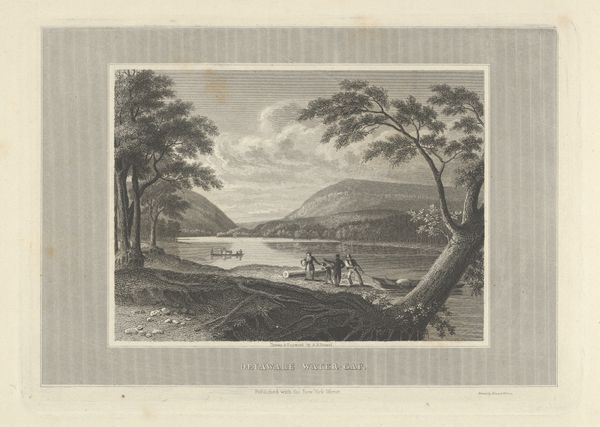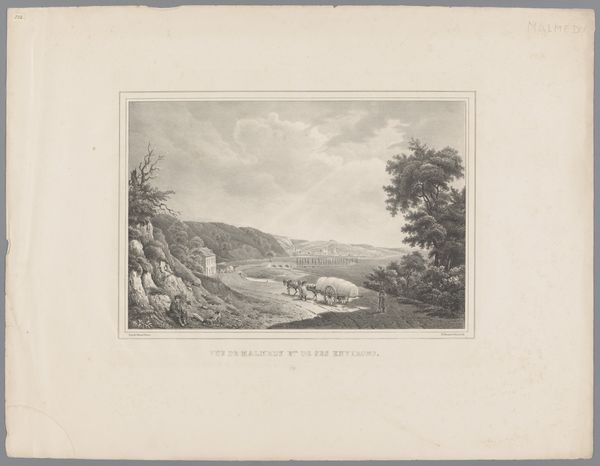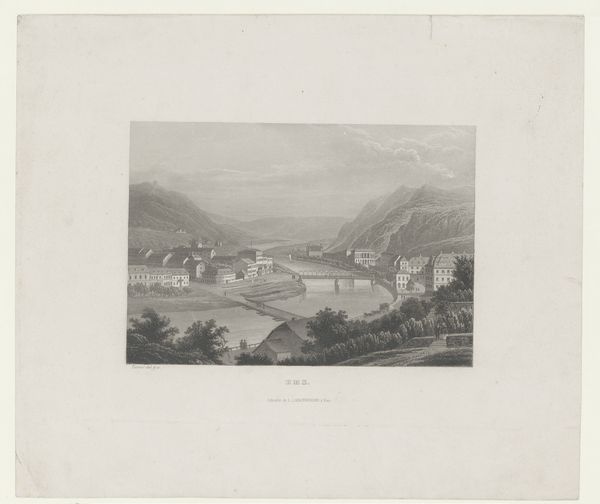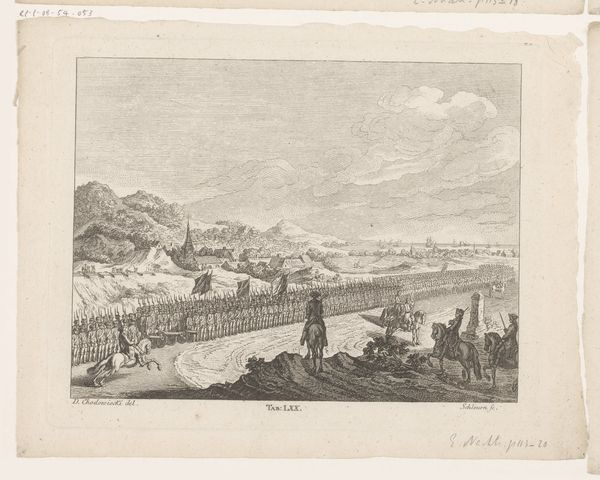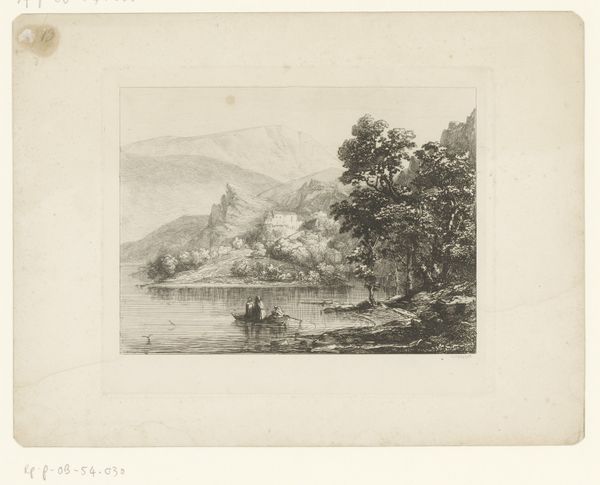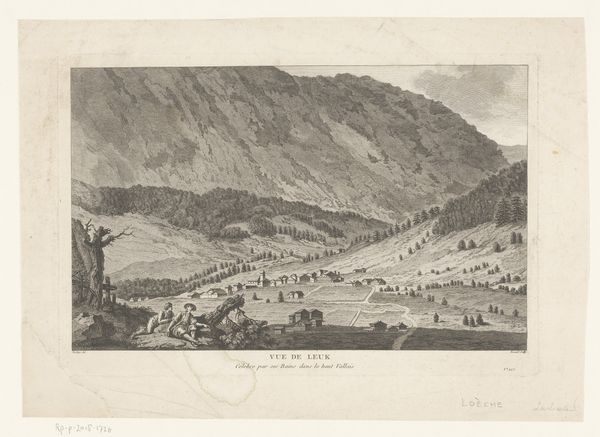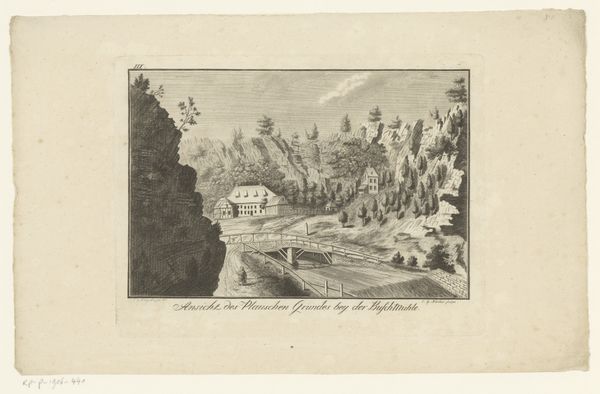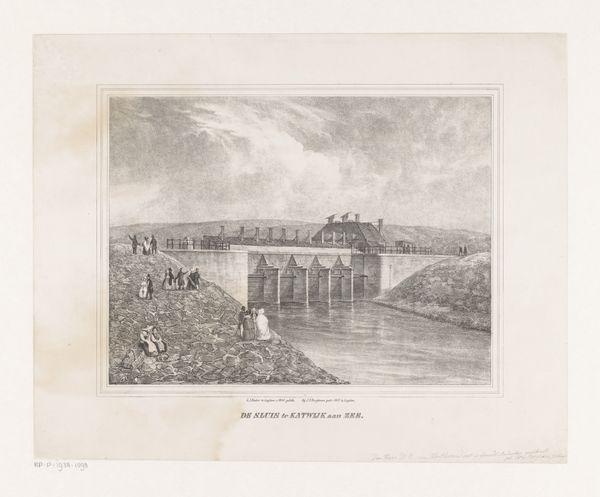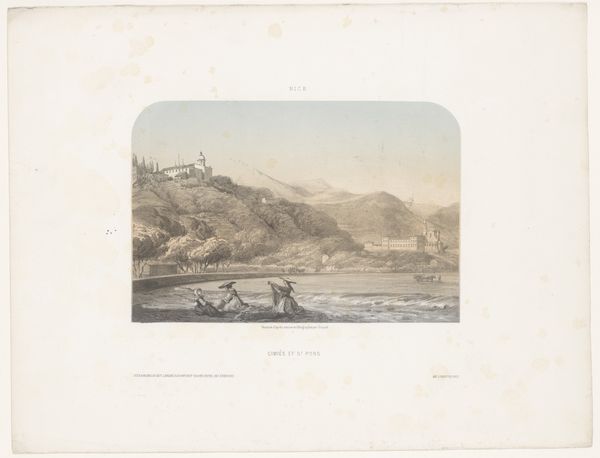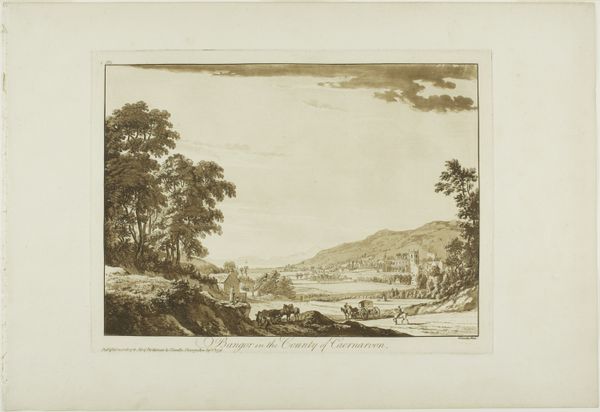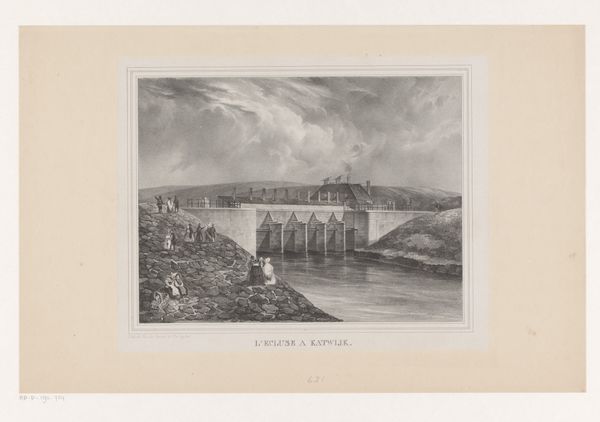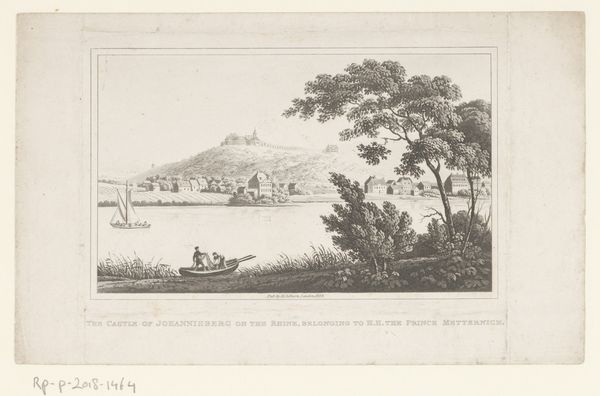
print, engraving
# print
#
landscape
#
romanticism
#
19th century
#
cityscape
#
engraving
Dimensions: height 270 mm, width 361 mm
Copyright: Rijks Museum: Open Domain
Curator: Immediately, I’m struck by this serene feeling. It’s almost monochrome, and yet so vibrant. Like a memory half-recalled... Editor: It’s a fascinating image, isn’t it? This is "Zicht op de brug over de Var bij Nice," or "View of the bridge over the Var near Nice." It was created in 1834 by Paul-Émile Barberi. It’s an engraving, so a print. Curator: Engraving! That explains the… precision, maybe? The little figures down by the river look like they were etched into my brain, too, with that kind of clarity. And yet, this is supposed to be a romantic landscape? Isn’t romanticism all swirling emotion? Editor: The Romantic era was fascinated by landscapes—specifically how nature reflects humanity's emotional state. Think about it: a precarious bridge, connecting two places, two ideas. Barberi highlights both the bridge's function as infrastructure but its instability in the face of grand nature. Curator: Hmmm… The instability definitely seeps through. I suppose that is the romantic dilemma – being tiny but also trying so hard! Look at the poor horse trying to cross the bridge and that locomotive chugging away… What an effort! What a commentary. Editor: And it's essential to remember who had the privilege of literally moving through these spaces! Who has the power to overcome 'unstable' or 'untamed' Nature. Consider the social implications of these landscapes! Curator: Right. Building a bridge isn’t just an engineering feat; it’s also an assertion of control, like claiming the river and anything on its other bank for the so called progress of civilization. I hadn’t considered the power at play here until just now. Editor: Exactly! I hope that listeners, after examining this romantic-era artwork with its city view, may be nudged to ponder on historical landscapes and their embedded, but very telling and significant socio-political values. Curator: Thanks for that… You've turned my melancholy landscape into a landscape of possibility too.
Comments
No comments
Be the first to comment and join the conversation on the ultimate creative platform.
